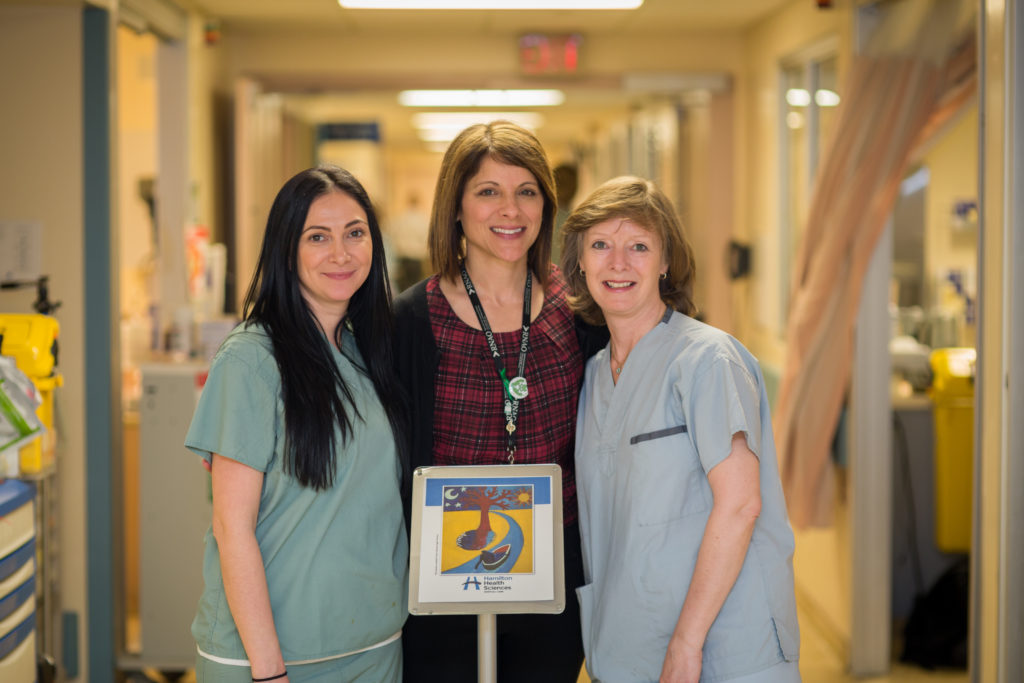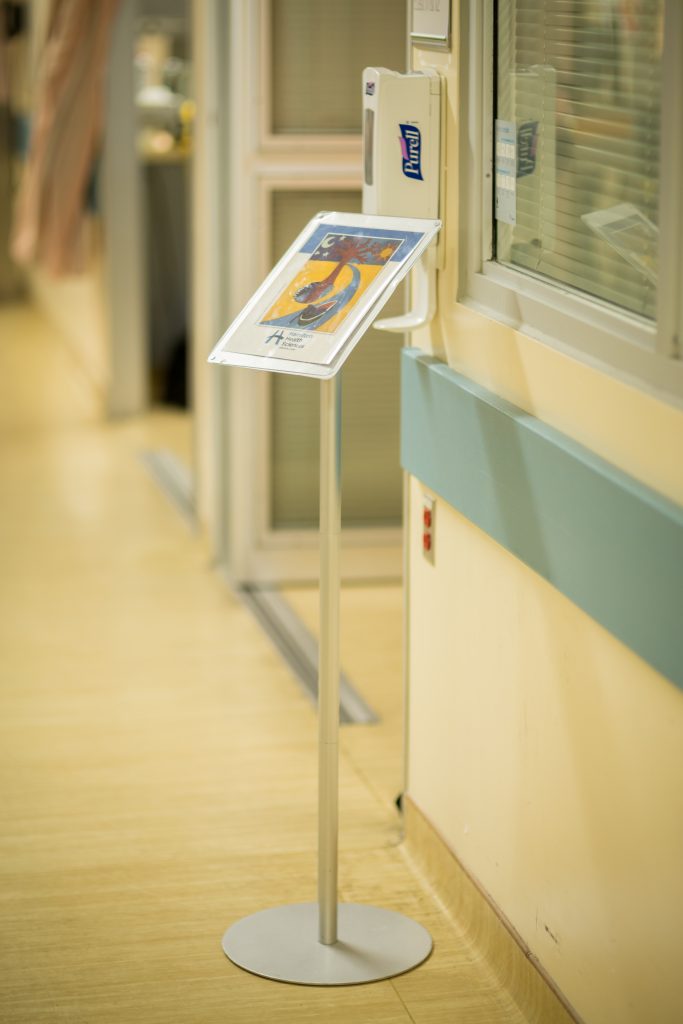
End of life stand brings peace to ICU
When a patient in the intensive care unit at Hamilton General Hospital is dying, a staff member places a podium outside their room. The simple metal end of life stand is adorned with an artwork depicting a man paddling a canoe down a winding river. This subtle symbol has made a world of difference for patients, families and staff on the unit.
The idea was born from the End of Life Committee, an initiative spearheaded by three nurses to improve the unit’s practices around end of life. The ICU can be a busy place. It can be loud and hurried. Nurses, Edita Hajdini and Grace Houston, noticed that the atmosphere was weighing on staff, especially when someone was nearing death.

End of life stand featuring artwork by Michele Angelo Petrone
With support from Sue DiSabatino, the pair surveyed over 100 ICU staff and physicians to learn what improvements could be made to the end of life process. Many who responded said that communication needed improvement and that they wanted more consistency in the way end of life care is delivered.A
Using that feedback, Hajdini, Houston, DiSabatino and their team implemented a number of measures to improve end of life care in the ICU.
“It has changed the atmosphere in our unit to make a more dignified death.”
One of the simplest but most impactful additions they’ve made is the end of life stand. All three nurses agree that it has been transformative. Now, when someone is near death, a quiet, respectful calm washes over the unit. Hajdini says, “It has changed the atmosphere in our unit to make a more dignified death.”
The team has also implemented a standardized protocol for ordering medications and procedures at end of life, and created a cart stocked with tea, Kleenex, pamphlets and journals to bring to the bedside of a dying person.
Houston says collectively, these initiatives have created consistency in the way their team delivers end of life care which has been beneficial for both patients and staff, “by supporting our nurses with tools to make their jobs easier, the patient and family will have an enhanced end of life experience.”
